Wondrous Warblers
Tiny globetrotters
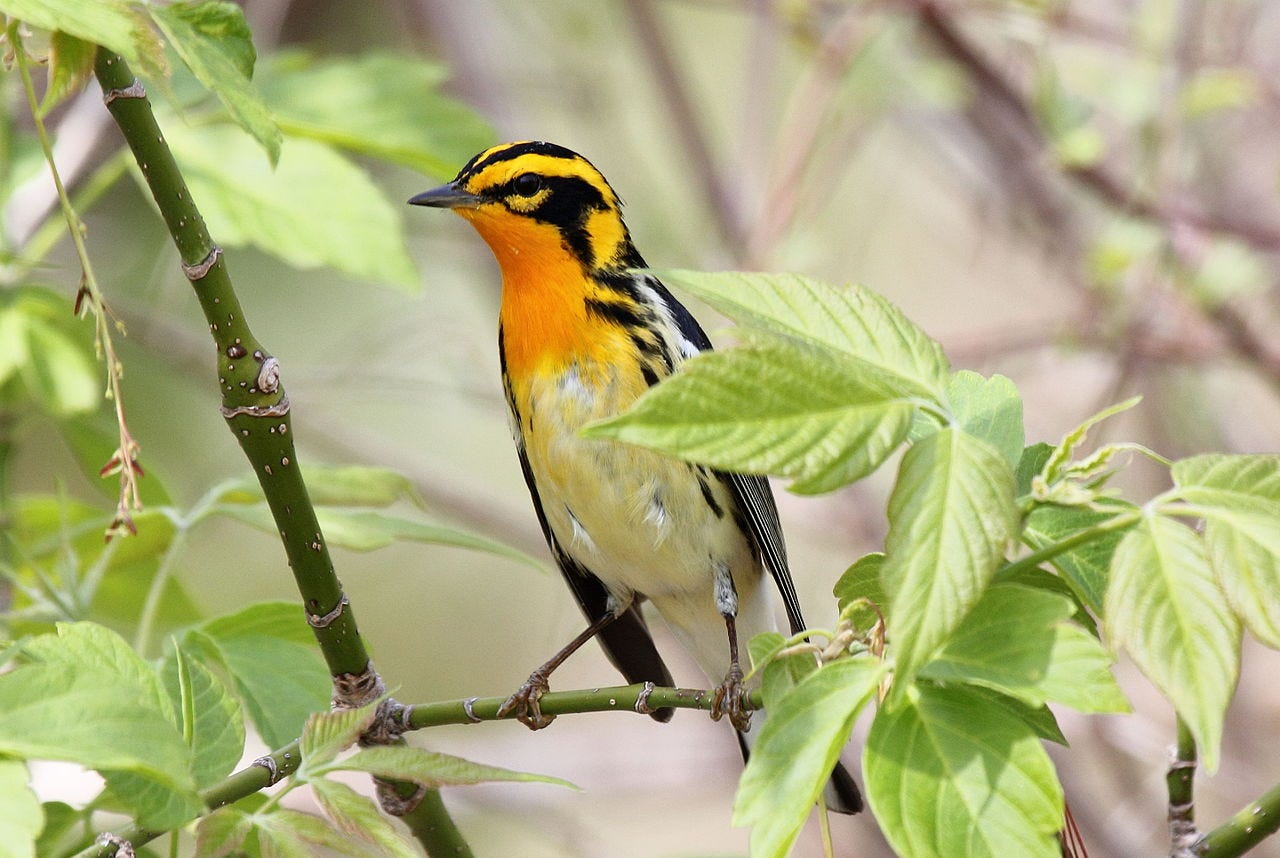
When it seems as though the upswing cannot possibly get any stronger - buds bursting forth, seeds germinating, insects emerging, frogs singing, nights filled with fragrance - in the middle of May the trees fill with living jewels.
That might seem to be an exaggeration, but how else can one describe a Chestnut-sided Warbler, or a Blackburnian Warbler, or the iridescent Black-throated Blue?
The upswing is not just an awakening from winter slumber, a transition from potential to kinetic vivacity, but also an up-wing: over a hundred species of birds winging their way northward from tropical locales.
Birds cannot hibernate, and there are no insects to be found in Alberta in January, so it is perhaps not surprising that the great migrations evolved. Millions of years ago, as the continents settled into their current positions, a four-inch-long tree-dweller and catcher of small forest insects discovered that a great bounty could be had, and many nestlings raised, in the boreal forests in June, provided that she could escape back to her tropical home when the north winds blew and the leaves turned golden and the insect abundance disappeared.
So an ancestral warbler began an annual cycle of movement, and soon began to diversify. Biologists call it adaptive radiation, which is another way of saying evolutionary creativity, exploration of niches. There were so many choices. What to eat: insects in conifers, insects in birches, insects along tree trunks, insects in the undergrowth, insects along streams. Where to nest: in mature forests, in young forests, along edges, in marshes. Where to spend the winter: in Mexico, in Central America, in the Caribbean, in the Amazon, in the Andes.
There are now fifty-two species of warblers that regularly visit the land that comprises the United States of America, and during May migration it is not uncommon to find more than thirty in one location. They vary rather little in size and shape, but oh, the songs and the colors!
Warblers flit from branch to branch, or sally out to catch flying insects in mid-air. They are always in motion, seldom remaining in one place for more than a few seconds, much to the chagrin of birdwatchers. They appear to be short-distance flyers, more comfortable on their feet than on the wing, unlike the swallows and vultures and hawks that seldom touch down.
So I used to assume, when the warblers arrived in southern Minnesota, that they had been gradually working their way northward, feeding during the day and resting at night. But it turns out that’s not how they migrate. It would be too slow, and the narrow isthmus of Central America would not have enough food for them all as they pass through. Instead, they make nonstop red-eye flights, covering hundreds of miles between dusk and dawn and sleeping very little. Many of them cross the Gulf of Mexico, a distance of 500 miles over open water through variable winds and storms.
It turns out that even that is not pushing their limits. Many Blackpoll Warblers, when flying south in autumn, wing their way nonstop from Nova Scotia to Haiti, a distance of over 1700 miles, navigating by Earth’s magnetic field for three nights and two days through all weather at an altitude of 3500 ft, departing from forests of golden birches and sugar maples and landing to forage among coconut palms, burning through nearly a third of their body mass along the way. Keep in mind that this is a creature that weighs slightly over half an ounce and lives for about five years. Juvenile birds, just three months out of the egg, complete this epic southward journey and return northward the following spring by a longer route through the southeastern states, finding their natal forest to claim territories and raise young ones of their own.
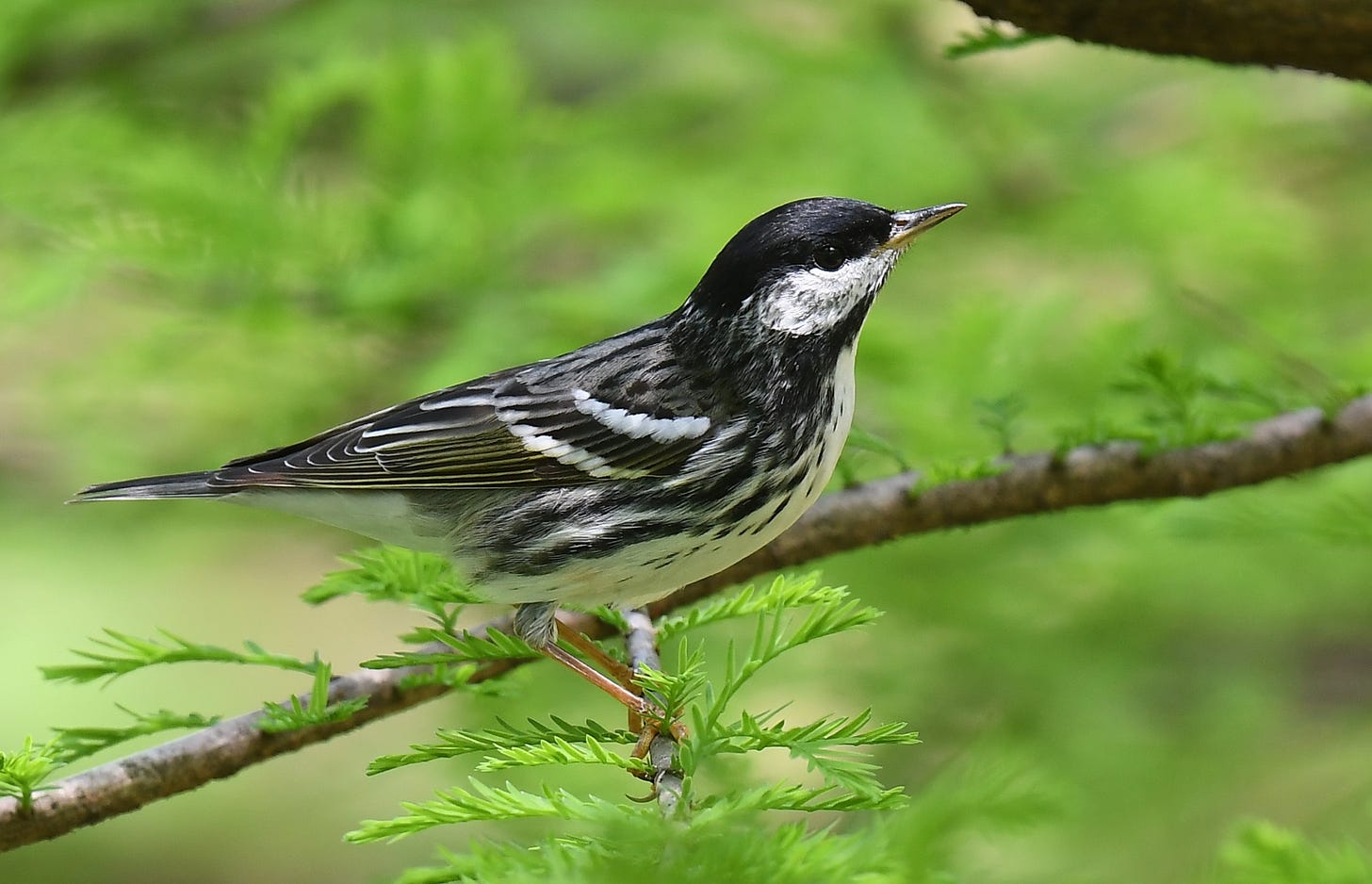
Science is good at answering “what” and “when” and “where”, and sometimes “how”. But it falls flat when it comes to “why.” I find that my background in biology and ecology gives me an even greater appreciation of the marvelous living world that surrounds us, from chloroplasts to cells to mushrooms to warblers to humans, provided that I ignore science’s attempts to impose meaning - or lack thereof - upon it. To most scientists, all living things are effectively complex chemical meat-robots whose form and function can be explained by their ability to survive, compete, and reproduce, whose conciousness - if it even really exists - is an emergent and transient property of their biology, and whose existence is ultimately a matter of chaotic happenstance. Color me unconvinced.
Why is it, exactly, that Blackpoll Warblers and Chestnut-sided Warblers are next of kin and yet so remarkably different? Or Cerulean and Parula and Cape May Warblers, another evolutionary family? How on earth did that golden chartreuse cap come into existence and become stable across the population? Biologists will mumble something about sexual selection - basicly the women like their men that way - which just kicks the can a short distance to another dead-end mystery. To me, this drive toward beauty and unique expressions only makes sense if I view the biosphere as a creative enterprise, as a playground of consciousness taking form - a perspective from which the warblers appear even more wondrous. Perhaps the Chestnut-sided Warbler appears as it does because that is the true expression of the spirit, the consciousness, the creative force behind it, dancing into existence on an evolutionary stage.

teacher-teacher-Teacher-Teacher-TEACHER-TEACHER-TEACHER. An ubiquitous crescendo in eastern woodlands. Follow the sound closely and you will find a small, speckled bird with an orange cap, like a tiny thrush, projecting an amazing number of decibels for his size. Climb into the treetops at dusk and you will see him hover up above the canopy and warble his melodious night song - so different but with a few TEACHERs interspersed - before diving back to his understory home. I once stumbled across a nest of fledglings - a roofed-over thatch “oven” well-hidden on the forest floor - from which the little ones raced on young legs as their parents kept watch. Ovenbird.
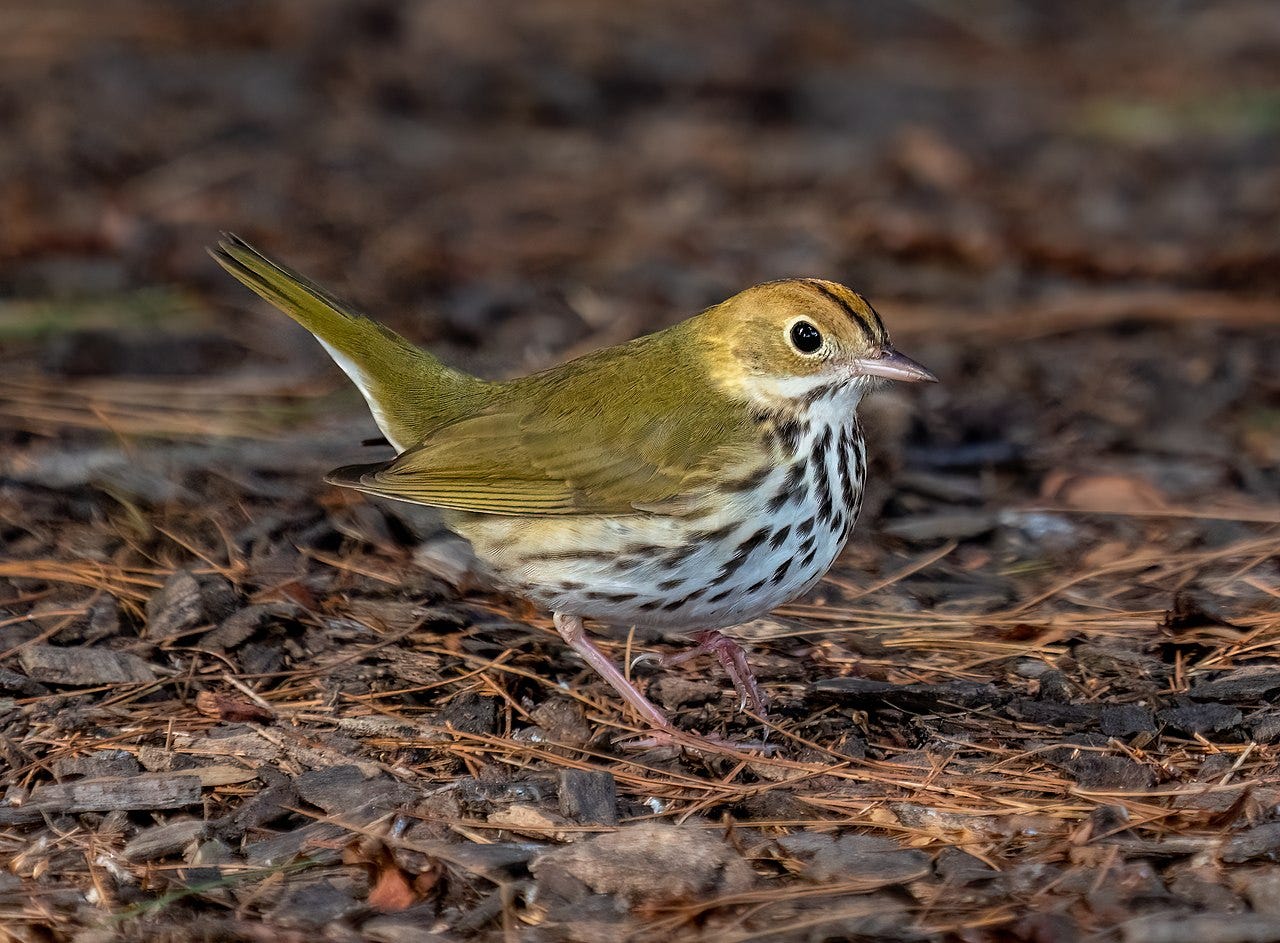
Wichity-wichity-wichity. In tall grass along streams, with a few shrubs and trees, the habitat of song sparrows. Bright yellow below with a black mask, like a tiny, curious robber, calling from blackberries and tall stems of grass while hunting the whole time. The least arboreal of warblers. Yellowthroat.
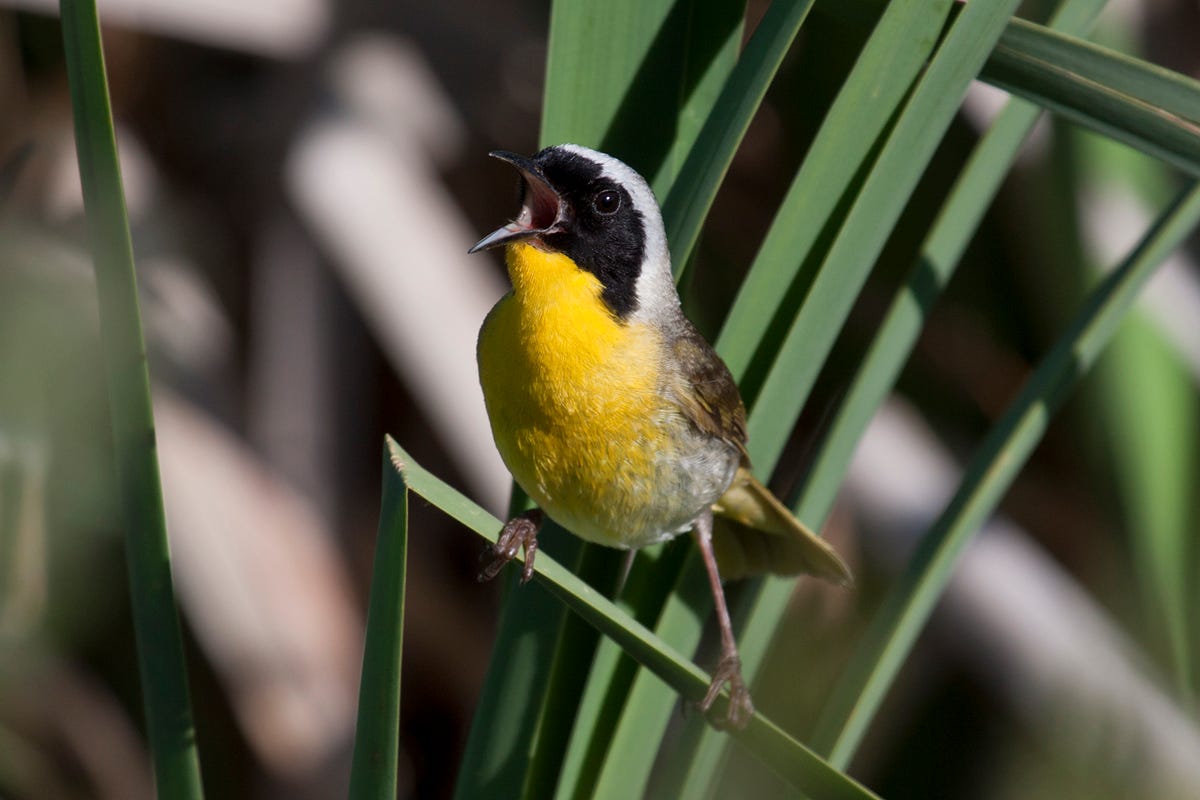
In salmonberry thickets in coastal forests, a flash of gold. Sweet-sweet-sweet-sweet-sweet-sweet. Then he appears, pauses a moment to swallow a bug before flitting off to find the next one. A black cap confirms his identity. Wilson’s Warbler. I wonder what name he would choose for himself; I doubt he cares much for the Scottish poet and ornithologist whose surname he shares with a snipe, a phalarope, a plover, and a storm-petrel.
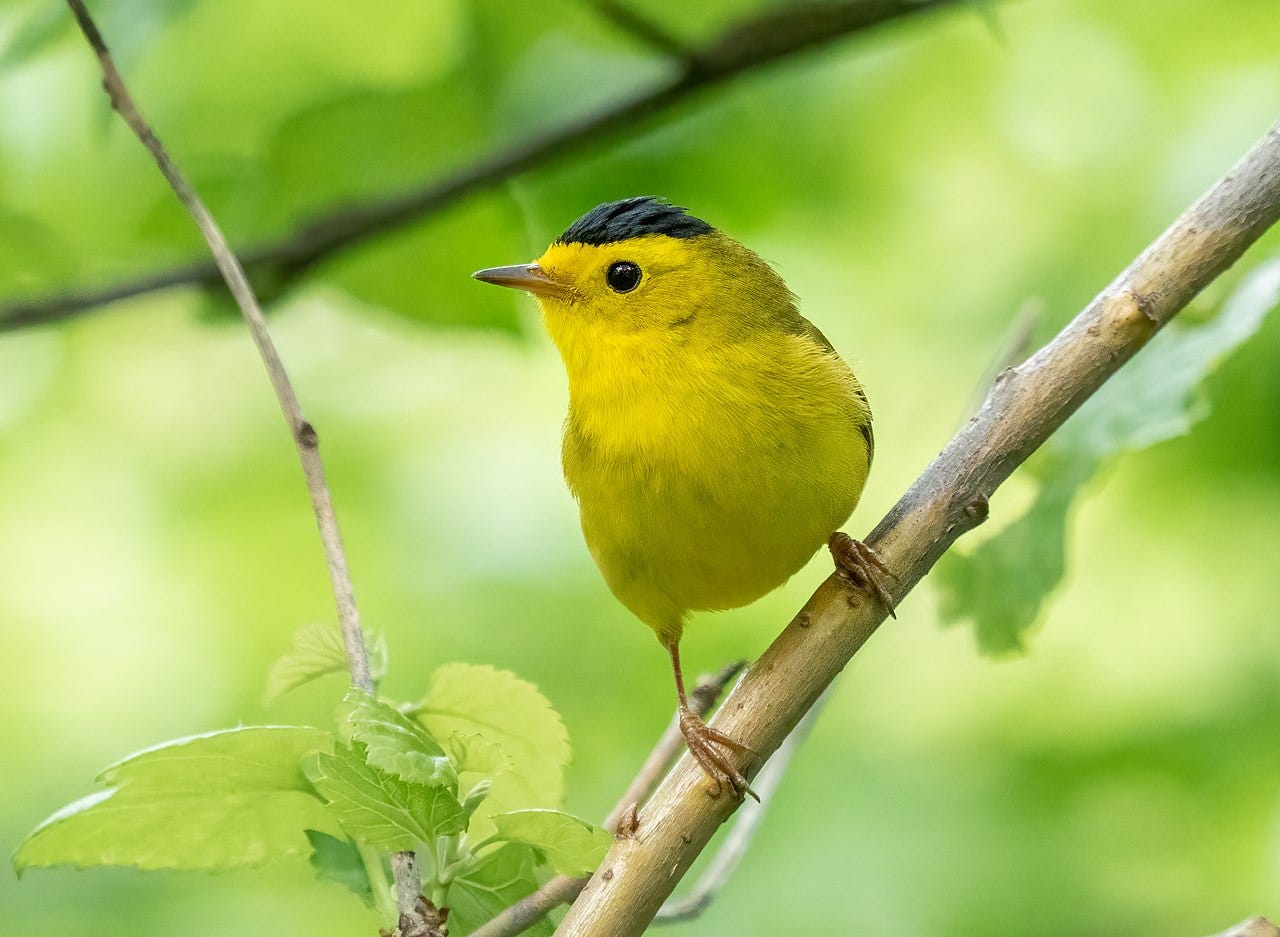
Beeeeeeeeee-bzzzzzzzzzz. A unique an unmistakable sound, new to me in my childhood home. I watched quietly for hours amidst May mosquitoes, found the singer, even found their nest hidden in the swamp. Pioneers moving beyond their listed range, perhaps responding to changing climate. Blue-winged Warbler.
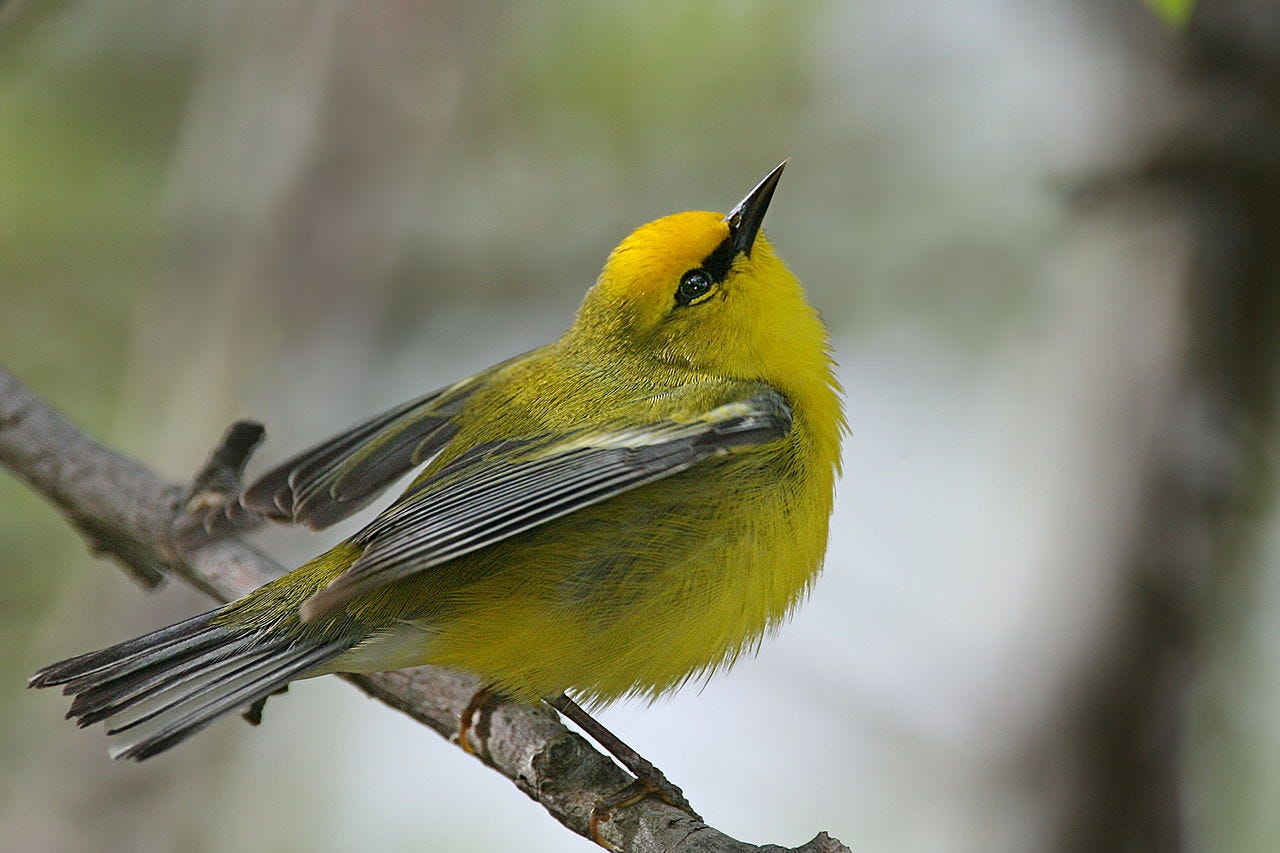
Hundreds of small chips. Chickadees call, and nuthatches. A mixed flock has arrived, let’s see who is in it? Blue-gray with yellow crown and rump. Yellow-rumped Warbler - most abundant and earliest to arrive, even staying through the winter sometimes in Oregon. Solid gold with orange streaks: Yellow Warbler. A flash of chartreuse, can only be Chestnut-Sided. So beautiful in binoculars. Orange face: Blackburnian. Black cap: Blackpoll. Iridescent blue with a black face: Black-throated Blue. That pattern can only be Magnolia. Cape May. Bay-breasted. Tennessee. Parula. Black-throated Green. All traveling from different wintering grounds to different nesting territories but traveling together for the day, teaming up with the local chickadees whose calls warn of hawks, fattening up for the next red-eye flight.
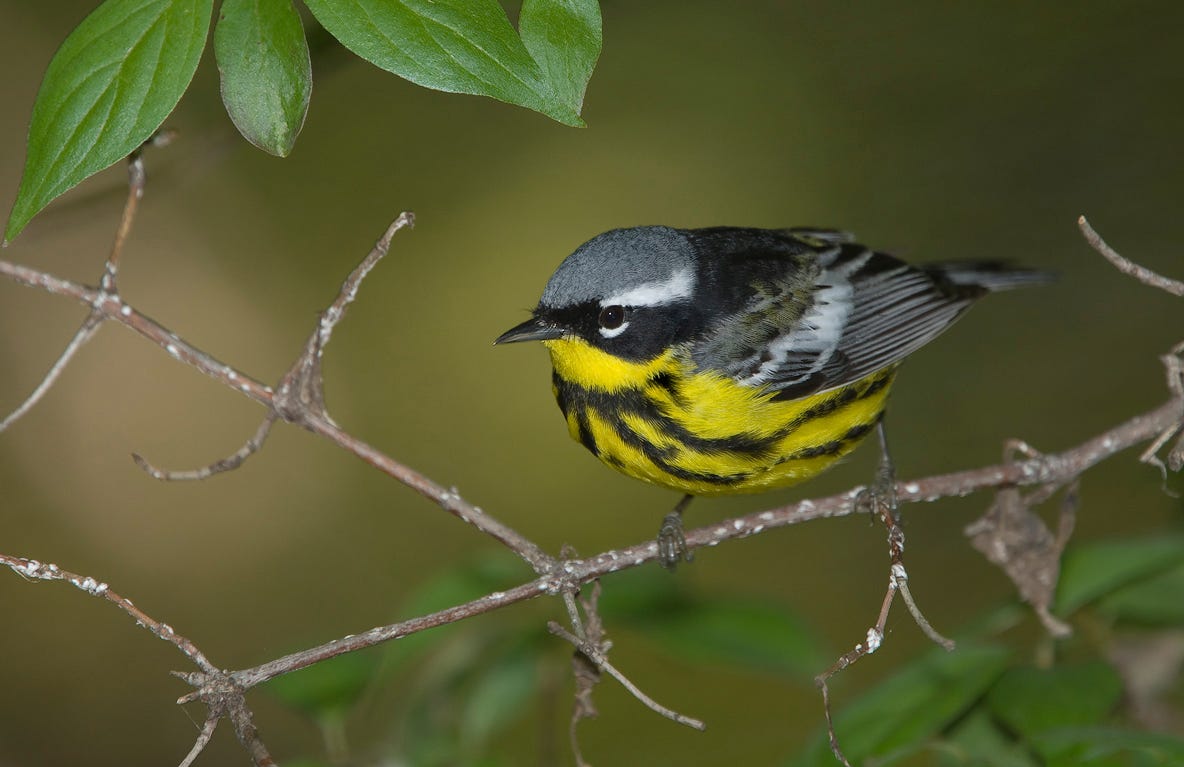
The next time life seems mundane, just remember that we live in a world where half-ounce birds make nonstop flights to the tropics and then find their way back to their natal forest, where fifty unique species of warblers wing their way north to partake of the transient insect bounty, where the kinetic vivacity of the upswing bursts forth in wilderness and sidewalk cracks and everywhere in between. I am grateful to be alive on this remarkable planet, especially in the month of May.


I am grateful for our warbler walk around the lake last you were here….my eyes don’t find so many as you, but I now greet them if I hear their songs….❤️